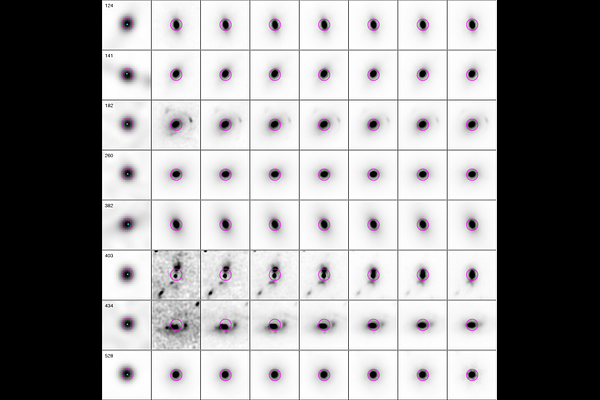Peering into the heart of darkness with VLBA : Radio Quiet AGN in the JWST North Ecliptic Pole Time-Domain Field

Peering into the heart of darkness with VLBA : Radio Quiet AGN in the JWST North Ecliptic Pole Time-Domain Field
Payaswini Saikia, Ramon Wrzosek, Joseph Gelfand, Walter Brisken, William Cotton, S. P. Willner, Hansung B. Gim, Rogier A. Windhorst, Vicente Estrada-Carpenter, Ivan Yu. Katkov, Ingyin Zaw, Michael Rosenthal, Hanaan Shafi, Kenneth Kellermann, James Condon, Anton M. Koekemoer, Christopher J. Conselice, Rafael Ortiz III, Christopher N. A. Willmer, Brenda Frye, Norman A. Grogin, Heidi B. Hammel, Seth H. Cohen, Rolf A. Jansen, Jake Summers, Jordan C. J. D'Silva, Simon P. Driver, Nor Pirzkal, Haojing Yan, Min S. Yun
AbstractWe present initial results from the 4.8 GHz Very Long Baseline Array (VLBA) survey of the JWST North Ecliptic Pole Time-Domain Field (TDF). From 106 radio sources found in the Karl G. Jansky Very Large Array observations in the TDF, we detected 12 sources (11% detection rate) at 3.3 $\mu$Jy rms sensitivity and 4 mas resolution. Most detections exhibit pc-scale emission (less than 40 pc) with high VLBA/VLA flux density ratios and brightness temperatures exceeding 10$^5$ K, confirming non-thermal AGN activity. Spectral indices ($>$ -0.5) correlate with higher VLBA/VLA flux ratios, consistent with synchrotron emission from AGN coronae or jets. In the majority of our sources star formation contributes less than 50% of the total VLBA radio emission, with a few cases where the emission is almost entirely AGN-driven. Although the radio emission from radio quiet AGN is thought to be primarily driven by star formation, our VLBA observations confirm that there is also often a contribution at various levels from black hole driven AGN. Eight VLBA detections have JWST/NIRCam counterparts, predominantly early-type, bulge-dominated galaxies, which we use to get an estimate of the redshift and star formation rate (SFR). WISE colors indicate that VLBA detections are either AGN or intermediate-disk-dominated systems, while VLBA non-detections correspond to extended, star-forming galaxies. We compare SFRs derived from previous SCUBA-2 850 $\mu$m observations with new JWST-based estimates, and discuss the observed discrepancies, highlighting JWST's improved capability to disentangle AGN activity from star formation.